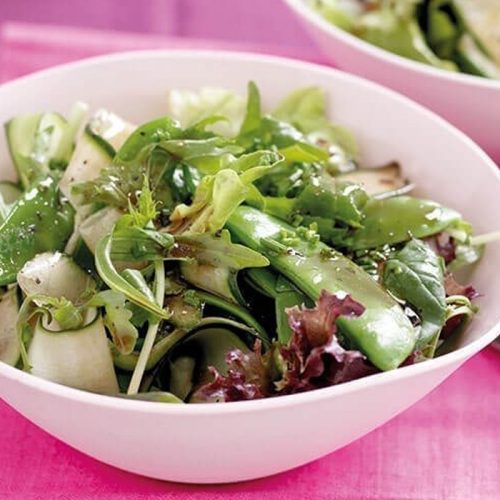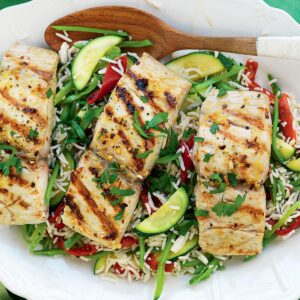
Don’t let special dietary needs get in the way of a great holiday. Follow our guide for a happy trip, knowing you’ll be eating well – and safely.
Plan your in-flight food
If you’re flying with an airline that serves a meal as part of the ticket, check with your airline to see if they cater for special dietary requirements. Air New Zealand, for example, has meal options such as gluten free, vegetarian and diabetes-safe, but you need to book in advance. Peanuts are no longer served or used in meals by Air New Zealand, but they can’t exclude trace elements of peanuts from the aircraft, which can be a potential problem if you have peanut allergy. It’s worth checking your airline’s allergen policy well in advance, and mention your allergy to the cabin crew as you board.
Warn your hotel about your requirements
If you’re staying in a hotel or an all-inclusive resort, don’t make your choice until you’ve checked they can be flexible about food. If you’ve already booked, call and ask if they’re used to dealing with allergies and intolerances. You could even ask to speak to the chef.
Pack snacks
Don’t rely on finding snacks to suit your diet at bus or train stations, service stations and airports. Take some with you, even if you’re on a short journey. Don’t forget you could get stuck in traffic or your flight could be delayed. It’s worth taking a small supply of gluten-free bread or dairy-free milk if you need these, in case the shops are closed when you arrive at your destination (but don’t forget the fluid restrictions if you’re flying).
Learn the lingo
Look up key words in the local language before you go overseas – terms such as gluten, lactose, carbohydrate, vegetarian, vegan, or allergic and the food you’re allergic to. If you know a native speaker, ask them to write down some useful sentences you can show in restaurants and shops. Some countries have a different understanding of vegetarianism, for example, so you’ll want to be very clear. You can also purchase translation cards online.
Research the area
Before you travel, go online to find out what’s on offer in the restaurants and cafés in the area you’re visiting. Many will have websites with menus you can check (or you could send them a Facebook message directly if they have a page). Try asking in a Facebook group for that area (for example, joining the ‘Gluten-free in London’ group).
Food bloggers and recipe writers in the area can also provide helpful suggestions. For example, a New York blogger who has coeliac disease might be a great help when it comes to local dining options.
Contact local organisations in the area for advice (such as Coeliac UK or vegetarian societies).
Check food labels
Read on-pack labels, just as you would at home.
The crossed grain symbol is widely used by coeliac member organisations around the world, as a source of reassurance that a product is safe to eat for those with coeliac disease or gluten sensitivity. It’s worth contacting local organisations to see what the allergen labelling requirements are in that country.
Prepare for low blood sugar
If you have diabetes and need snacks to keep your blood glucose levels up, pack extra when travelling. Individually wrapped biscuits, crackers, cereal bars or fruit buns will see you through long journeys, stopovers and delays. Don’t forget to take your glucose tablets or emergency sugary drinks in case of hypos. Diabetes New Zealand has loads of helpful tips for travel preparation on its website.
Take your recipes!
Self-catering doesn’t have to be a chore. Use your holiday as an excuse to try as many new foods and flavours as you can. Read up on local specialities, so you know what’s in them, then try out some new recipes. Find inspiration in this website (either print out recipes or add them to your saved recipes list).
Be prepared
It’s a good idea to take a ‘just-in-case’ kit. For example, if you use an EpiPen, make sure it’s in date and you have a spare in your hand luggage. Take plenty of your usual medication and source details of local pharmacies, doctors and hospitals in advance.
If flying, check if you’ll need documentation to travel with medication or needles (your airline’s website will tell you).
Tips for travelling with coeliac disease
By general manager of Coeliac New Zealand, Dana Alexander.
- Make sure you’re familiar with what products contain gluten so these can be avoided during travel away from home. A gluten-free food directory is available when you become a CNZ member.
- Research international coeliac organisations around the world to see whether the local food is coeliac-friendly. Many ethnic cuisines, such as Indian, Japanese or Mexican, plus Southeast Asian cuisines use gluten-free ingredients, but you will still need to check.
- Travelling safely gluten free requires plenty of advance planning, whether you’re travelling by road, by rail or in the sky. Consider what food to bring with you, or arrange to send food to the destination ahead of your arrival.
- Remember to book a coeliac meal for all sections of international travel flights.
- Always carry some tasty non-perishable gluten-free snacks to stay nourished if you cannot access safe gluten-free foods, and bring extra just in case.
- When booking a hotel ask for a room with a kitchenette and refrigerator so you can store and prepare your own food. Ensure, at a minimum, you have access to boiling hot water or a microwave to allow you to prepare gluten-free packaged meals, such as cooked rice pouches.
Useful websites
allergyeats.com Allergy-friendly restaurants in the United States
glutenfreepassport.com Trip planning, travel cards and kits and dining e-books for gluten-free and allergy travel
aoecs.org The Association of European Coeliac Societies has plenty of resources, including a list of gluten-free products and restaurants
celiactravel.com/cards Restaurant cards for coeliacs
diabetes.org.nz Diabetes NZ travel tips (located under ‘Living Well with Diabetes’, ‘tips, guides and articles’)
alittlebityummy.com Low-FODMAP blogger Alana Scott has heaps of advice under her ‘blogs’ section
airnewzealand.co.nz Air New Zealand has a comprehensive allergy policy
Article sources and references
- Air New Zealand. Special diets and food allergies. airnewzealand.co.nz/special-diets-allergieshttps://www.airnewzealand.co.nz/special-assistance-meals-diets-allergies
- Coeliac New Zealand. Useful links/websites. coeliac.org.nz/links-of-interest Accessed May 2017https://www.coeliac.org.nz/
www.healthyfood.com










